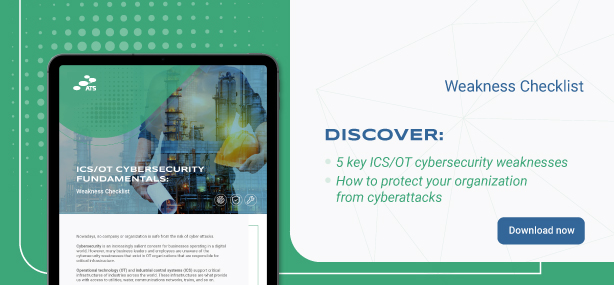CONNECTED IOT: HOW TO SECURE IOT DEVICES IN THE COMPANY?
IoT (INTERNET OF THINGS) devices were created in 1999. Since then, companies are continuously adding more and more IoT devices in their workspace as these devices make work a lot easier and faster. IoT devices are constantly upgrading with new features. The toaster is considered the first IoT device introduced in the market. And now there are thousands of IoT devices present in the market, for example, air quality sensors, Wi-fi typewriters, smart tennis rackets, etc.
The future of IoT devices is bright. According to Gartner, IoT devices are increasing rapidly at 21% per year(double every four years). Currently, there are almost 10.07 billion IoT devices installed worldwide. It is estimated that the count will increase up to 30 billion by 2025.
IoT devices are the new future, but many risks are involved because of the lack of cybersecurity and possible cyberattacks. Many networks are involved in connecting IoT devices worldwide, which brings a massive threat to securing data stored in the devices from cybercriminals.
Because the huge number of IoT devices are connected worldwide, there is a significant chunk of networks untouched and undetected, resulting in a massive threat of cyberattacks. For cybercriminals, it is easy to hack the system.
Because of the increase in demand for IoT devices, manufacturers tend to overlook their security and management. This has led to the lack of visibility and security of the devices. The devices are not successfully tracked, which results in unsecured data.
The industries are rapidly increasing the number of IoT devices in their sector because of the advancement of artificial intelligence and machine learning. But with advancement comes in-built security risks that leave data stored in IT and IoT devices in an unsecured state.
According to the Department of Justice’s Cybersecurity Unit, “once infected, IoT equipment can be used to launch large-scale botnet attacks that threaten the stability and performance of private networks.” Companies need to understand devices’ security systems and bring up regular updates to avoid any cyberattacks to avoid such situations.
TOP 5 REASONS FOR IOT DEVICES THREATS:
1. PRICING ISSUE
Generally, companies try to save money while purchasing technical stuff. Devices with built-in security are often costly, but paying the price is worth it as the company data is secured.
2. UNSECURED NETWORK
Not all networks used for sharing data worldwide are secure. A big chunk of them is not visible, which goes in favor of cyberattackers.
Langer, the CEO of IoT security company, Medigate said,
“Attackers are using IoT for lateral movement. They go through these devices in a network and try to reach an entry point or a segment of the network with valuable information. That east-west lateral movement is the most difficult. Cyber Attackers are taking advantage of the vulnerable nature of the IoT devices to pivot or propagate within the network.”

3. IMPROPER DATA TRANSFER AND STORAGE
There are thousands of networks involved in transferring and storing data worldwide. Because of this, there is a high chance of data getting stolen as all the networks are not protected. Also, personal information is stored due to third-party cookies provided by digital marketers. It also accounts for a high chance of people losing their personal information in cyberattacks.
4. IRRESPONSIBLE MANAGEABILITY
It means manufacturers overlook the importance of managing devices properly. Often, they use third-party vendors to manage device security instead of using good credible managing sources.
5. WEAK PASSWORDS
Often, devices come with preset credentials, usernames, and passwords provided by the manufacturer itself. These default credentials are publicly available, which results in a high chance of cyberattack possibilities. To ensure the safety of the data stored in devices, manufacturers must set up additional new login criteria.
HERE ARE 7 RECOMMENDED METHODS TO SECURE IOT DEVICES
1. UPDATING DEVICES REGULARLY:
Often, the makers of IoT devices send security updates to shield the device from cyberattacks. End-clients should not overlook these updates and update the device routinely to shield their information from the developing digital assault strategies.
2. ISOLATION ISN’T ENOUGH:
Often, traditional IoT security involves the removal of compromised devices from the network. The security system merges with firewall and Network Access Control to remove compromised devices to lighten the cyber attacks. Though the process is effective in preventing a breach, it has the side effect of disrupting the expected performance of the device, which can result in an easy path for attackers to attack.

3. AUTOMATION OF THE RISK EXPOSURE:
Industries need to allow their system admins to perform device up-gradation, such as updating the latest firmware version and changing passwords and configurations. It allows the security team to acknowledge the possible attacks before it happens. This approach helps to reduce possible cyber threats and costs per incident.
4. CONSTANT DEVICE MANAGEMENT:
IoT devices are the most vulnerable to attack, especially when there is a lack of visibility in the network. The security team can prevent cyber attacks by understanding the devices connected to their networks and properly managing them. If cyberattacks happen, proper management of devices will allow you to detect and track them quickly and react instantly.
5. PROACTIVE APPROACH:
With evolving IoT technology, industries have a constant demand to have a proactive approach towards device security. By understanding the security needs, such as real-time event tracking, industries can protect their devices from future cyberattacks and secure their data from cybercriminals.
6. AVOIDING PUBLIC WI-FI NETWORKS:
IoT devices such as mobile phones, smartwatches, etc., must not be connected to public wi-fi networks as they are the most insecure network. Although it may be tempting for users to use free data, it is risky for their personal information.
7. ACCESSIBILITY OF THE IOT DEVICES:
Enterprises should make sure that their IoT devices are only accessible to their employees. Identity security practices, including passwords and biometrics, can help ensure device safety.
As IoT innovation progresses and develops, the requirement for IoT security arrangements will keep on upholding changes on how various enterprises will utilize IoT devices in their surroundings. By enterprises understanding the distinctive security difficulties and dangers that IoT devices accompany, they will be better positioned to receive the benefits of IoT innovation.


















